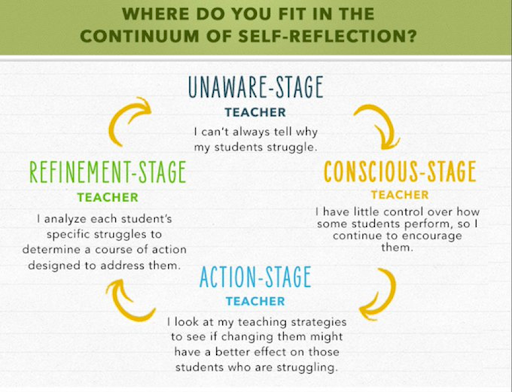How to be a Good Teaching Coach: An Ultimate Guide
From sharing the best classroom practices to addressing academic challenges, coaching is evolving as an imperative tool in the academic landscape. Even the best educators can immensely benefit from personalized coaching. According to a National Center for Education Statistics survey, 59% of schools have an instructional coach.
So, if you want to explore how to be a good teaching coach, you’re in the right place!
In this blog, we underpin the key aspects of being a good teaching coach. From the 5-step process and effective coaching strategies to key skills and practical tips, this blog could be your ultimate guide!
So, let’s buckle up on this amazing pursuit to revolutionize learning!
Understanding the Role of a Teaching Coach
The role of a teaching coach has evolved from testing unchartered waters to key stakeholders in schools. Research proves that a solid coach-teacher relationship refines teaching practices and unlocks student progress.
However, to benefit from coaching, the role of a teaching coach should be well-defined.
Here are a few prominent roles of teaching coaches:
Listeners
Sometimes, all teachers need is an ear to listen! The first and most prominent role of a teaching coach is to listen to teachers without biases or preconceived beliefs.
Mentors
As teaching coaches, you must advocate for best classroom practices and resources to gain professional expertise. Seek that innovative model, technique or valuable resources to help teachers maximize their potential!
Connectors
Do your teachers need help with guided reading or rubric assessment ideas? Coaches can help teachers connect with other subject matter experts, offer valuable resources, and stay adept with the trends.
Partners
Coaching is not a one-sided journey, but rather based on a strong teacher-coach partnership! From goal-setting and defining a personalized coaching experience to feedback loops, you need equal contributions from both entities.
Data Collectors
Data is a powerful indicator of how well educators align with school goals. From formative assessments to rubrics, data shows what’s working and what needs improvements.
How to be a Good Coaching Teacher?
Now you have gained what are the typical tasks of a teaching coach! Next, let’s deep dive into the 6-step process of how to be a good teaching coach!
So, let’s get started!
Step 1: Find your Coaching Persona & Niche
The first step is to start your coaching business — is to identify what kind of coach you want to be! Do you wish to be a literary coach to improve your reading skills? Or do you want to be a technology advocater to enhance learning?
This four-step process will help you discover your coaching persona & niche:
Self Reflection
Dig deeper into your skills, knowledge, interests, or past experiences.
Ask the following questions:
- What are your strengths and areas of expertise?
- Have you successfully navigated a challenge or problem in the past?
- Is there a specific educational area or target audience you’re passionate about?
Understanding Your Target Audience
A deeper understanding of the target audience helps to select the niche better! Would you be coaching elementary or middle school teachers? What priorities do district leaders have for schools?
Identifying Your Specialized Niche
Now, it’s time to list down the potential niches.
Here are a few niches to explore:
- Subject-specific niching like literacy, math, or science
- Technology integration specialists like advocating edtech tools and resources
- Classroom management coaching, like effective classroom practices
- Data-driven coaching specializations like formative assessment and data coaching
Testing Your Niche Profitability
The last step is to discuss your niche viability with teachers and administrators. Evaluate the demand and monetization prospects.
Step 2: Fostering Strong Relationships
Trust and reliability are two essential pillars of teaching coaching. A successful coaching experience thrives on a teacher-coach solid relationship!
While teachers must believe the coach’s ultimate goal is continuous improvement, coaches believe teachers’ ultimate goal is academic achievement. This symbiotic relationship lays the foundation for a productive relationship.
How can you nurture this mutual relationship?
Here are the key aspects to build a strong relationship:
- Create effective partnership agreements, defining each entity’s roles, outcomes, metrics, etc.
- Build teacher leadership capacity by inviting them to add resources or seek support for navigating complex challenges
- Involve teachers in discussions about coaching offerings, goals and outcomes
- Seek timely feedback from teachers to refine your coaching services
- Find ways to manage resistance and strategies for conflict resolution
Step 3: Use Data-Driven Instructional Coaching
One of the essential steps to be a good teaching coach is leveraging data for coaching.
Combining data and trust is a great synergy for effective coaching!
While teachers have access to a whole reservoir of data, data shouldn’t be a dirty word! That’s where an instructional coach plays a valuable role: making data analysis streamlined, iterative and a worthy teacher experience!
For example, exit tickets on content-related questions collected from students at the end of a lesson help teachers to identify improvement areas.
Here are four essential aspects of successful teacher-coach collaboration for leveraging data effectively:
Data Collection
The first step towards data-driven decision-making is to understand what type of data to collect and analyze. Data overload is a significant challenge for teachers! Coaches can ask this simple question to understand what’s important: “Does this data help you achieve your long-term goals?”
Formative assessment, student engagement, behavioral engagement, and student work samples are few essential data sources.
💡Learn from this interesting article on how to collect data in the classroom.
Focus on One Thing to Collect Data
A classroom is like a science lab rife with several uncontrollable variables. So, it is essential to choose the one thing that matters and gather data on that. You can later build on other variables. This creates a framework to — repeat, repeat and improve!
Leverage Data Protocol
Data protocols might seem boring, and it’s typical to skip them! But they help us view student data objectively and see what’s working and what’s not!
Common Data Protocols are:
- ATLAS-Looking at Data Protocol
- Data-Driven Dialogue Protocol
- Fine-Tuning Data Protocol
- 5 Why’s Protocol
📙Important: Explore these resources to learn more about data protocols:
Data is an Ongoing Quest
Data is constantly evolving, so data partnerships should be iterative! Teachers must collect data based on the defined goal set as per the action plan.
Create a feedback and follow-up loop to drive a cycle of continuous improvement!
Step 4: Determine Your Coaching Goals
Goal-setting is an essential part of instructional coaching. When coaches define the right goals with teachers, coaching definitely makes a difference! These goals are measurable, specific, observable and achievable.
But goal setting is a reflective process!
“The difference between mediocrity and excellence is self-reflection. So, one of the best ways to improve educational outcomes is to build reflective capacity of teachers.”
-Creating a Culture of Self-Practice
So, what exactly happens in this phase?
- Select a teaching practice.
- Focus on a specific aspect of practice for coaching.
- Define goals to consider specific behaviors for your coaching process.
An essential tool for self-reflection is the Continuum of Self-Reflection. It divides teachers into four stages of self-reflection:
1. Unaware Phase: Teachers in the unaware phase have little or no awareness of instructional classroom practices.
Role as a coach(Partner): The role of coaches here is to identify the teacher’s strengths, weaknesses and capacity, build trust through strong interpersonal relationships, and create a need for change.
2. Conscious Phase: In this phase, teachers show a “knowing-doing” gap. However, they have limited ability to identify their problems and can easily get off-track.
Role as a coach(Motivator): Encourage and set goals to make them accountable.
3. Action Phase: In the action phase, they consistently apply knowledge but need help refining their work.
Role as a Coach(Mentor): Help to develop independent thinking and be more receptive towards different perspectives.
4. Refinement Phase: In the final stage of the model, teachers possess knowledge of instructional strategies but fall for the better mousetrap fallacy.
Role as a Coach(Collaborator): To help in long-term growth and indulge in mirror listening.
So, which phase does your client fit in?

Continuum of Self-Reflection
Step 5: Define a Personalized Coaching Experience
Coaching has evolved as a supportive framework for fostering student development. But, like all strategies, it must be compelling to show results.
So, is there a way to manifest a transformative change?
The answer is a more personalized coaching experience!
This might involve emphasizing leadership, teaching, learning or even pedagogy. For example, if a particular child isn’t benefiting from a teaching practice, coaches can give feedback to be flexible and explore new teaching strategies.
Here’s a simple 3-step process to build your personalized coaching program:
- A clear coaching structure involving models like STRIDE, GROW, or CIGAR model.
- Open questioning is used to identify the teacher’s needs, challenges, and pain points.
- Follow-up to offer non-judgement or real-time feedback.
Coaches can also employ peer, cognitive, co-teaching, modeling, etc. Coaching isn’t limited to classrooms; explore video-based learning, virtual programs, etc.
Pro Tip: Want to nail the right way of giving constructive feedback? Master the art of communication with resources like the “The Art of Coaching” by Elena Aguilar and “Better Conversations” by Jim Knight.
Step 6: Take Feedback, Improve Your Coaching Skills
Well, if it’s the end of the year, it’s also time for some difficult yet insightful feedback cycles!
“Reflective practice” is a commonly used term in coaching, and knowing oneself is often the first step towards coaching mastery! After a few hours of coaching, it’s natural to fall for the “I-know-it-all” attitude!
There are three feedback levels that can keep you improve your coaching skills :
- Individual Feedback
Coaches can host individual feedback sessions with teachers. Ask the following questions at the end of each coaching session: What was the most valuable thing in today’s session? Is there anything that you expect me to do differently?
Note down these requests to improve your skills when you don the coaching hats!
- Group Feedback
Here you can ideally sit with a small group of colleagues who know about your coaching practices and get honest feedback! You can keep all the questions ready beforehand and equip yourself with some great insights!
- Survey
This is the highest level of feedback you typically gain from school. You get more acquainted with what the organization expects and how you can stand up to them! Ideally, take this type of feedback once a year or once a semester.
Well, it’s a wrap now! You have gained much information with this detailed guide on how to be a good teaching coach.
Pro Tip: Need help with marketing and scaling your business?:
7 Effective Coaching Strategies to Become an Instructional Coach
Becoming a good teaching coach is a great, powerful way to empower educators and thereby facilitate student progress.
Let’s take a look at 7 proven coaching strategies that are valuable to carve a successful career!

7 Strategies on How to be a Good Teaching Coach
1. Observations
Observation is a crucial part of coaching, where coaches observe classroom practices and can offer feedback. It lays the foundation to set goals and start the coaching process.
2. Model Best Practices
Modeling is a practical demonstration of a technique you and your teacher together came up with. Now, modeling can occur in a classroom setting with students, without students, co-teaching, or through videos.
3. Co-Teaching
Co-teaching and working together with teachers you coach has several benefits. It helps to reinforce positive mindsets, positive beliefs, and re-learn teacher skills.
4. Co-Planning
This involves planning your lessons, developing content knowledge, and modeling strategies with your teachers.
5. Real-Time Coaching
Imagine a teacher taking lessons in the classroom and getting feedback right away! The teachers feel empowered and get an instant confidence boost from the two-way dialogues.
6. Feedback Loops
Effective feedback loops where coaches guide teachers with meaningful insights, practical strategies, and alternative approaches makes coaching successful.
7. Data-Driven Conversations
Leveraging data from classroom practices, formative assessments, and student performance acts as proof in coaching conversations.
What are the Key Skills & Qualities of a Good Teaching Coach?
Now you are equipped with the steps and strategies to become a good teaching coach. Next, let’s see if you have what it takes to be a good teacher coach!
Active Listening
An effective teaching coach has a knack to listening beyond words; being empathetic and resolving conflicts. This is especially useful when working with teachers having different perspectives and challenges.
Strong Interpersonal Skills
Excellent oral and written communication skills help to build resilient relationships with administrators, teachers, and other stakeholders.
Data Analysis
Analytical skills help identify data patterns, review student and teacher data, and draw meaningful conclusions. This allows coaches to discover learning gaps and areas for improvement.
Knowledge of Impactful Instructional Practices
Effective coaches advocate modeling practices, observational and reflection strategies, and co-teaching with other classroom teachers.
Ability to Give Feedback
Giving constructive feedback and highlighting improvement areas are a teaching coach’s essential duties.
How Much Do Instructional Coaches Make?
Instructional coaching is definitely a demanding field, given the 6% pr ojected job growth between 2019-2029.
According to ZipRecruiter, instructional coaches can earn around $58,307 annually ($28/hour).
According to Glassdoor, the average annual earnings for instructional coaches are $77,809. Top instructional coaches can earn around $98,000.
The average earnings of a teaching coach are influenced by the coach’s experience and education, niche, type of school, location, and coaching services.
Inspiring Teaching Coaches & Their Contributions
Let’s take a moment to get inspired by well-known personalities in the teaching and learning field!
Jim Knight
With more than two decades of experience in professional learning and teaching and instructional coaching, Jim Knight is one of the well-known names in instructional coaching. He is one of the key founders of ICG and a research associate at the University of Kansas (KUCRL). He distills his wisdom and immense knowledge of the field through his popular books “Instructional Coaching: A Partnership Approach to Improving Instruction” and “The Impact Cycle.”
Key Contributions: Developed Impact Cycle, a coaching model focusing on goal setting, collaboration, and strategies for improvement.

Elena Aguilar
Elena Aguilar is another prominent personality in transformational coaching. She started her pursuit in the field of education in 1994. Her body of work majorly focuses on equity, professional learning, and social-emotional learning. Elena Aguilar is also the founder of Bright Morning Consulting, an organization that offers professional development training to educators worldwide.
Her best-selling books include “The Art of Coaching Teams,” “The Art of Coaching,” and “Coaching for Equity.”
Key Contributions: Coaching for Equity, social-emotional learning

Ready to Empower Teachers with Coaching?
High-quality teaching is the cornerstone for child development. The role of teaching coaches has evolved over the years from “consultants” to “collaborators”, suggestive of the equal partnership dynamic.
While there’s a lot of advice on the internet, we hope this blog on how to be a good teaching coach helps you cut through the noise! Building trust and showing a genuine interest in helping educators sets you apart!
So, let’s begin this journey towards better learning and molding the bright minds of tomorrow!
FAQ-Related to How to be a Good Teaching Coach
1. How to be a good teaching coach?
Build strong teacher-coach relationships, make data-driven decisions, define nonjudgmental and personalized coaching experiences, and gather feedback to become a good teaching coach.
2. What do you need to become an instructional coach?
Here are the requirements to become an instructional coach:
- Bachelor’s or master’s degree in education, curriculum, instruction or leadership.
- Extensive teaching experience in PK-12 setting
- Knowledge of the best practices in instruction, curriculum and assessment development
- Some states even demand education administrator or teaching license
3. What makes a great teaching coach?
A great teaching coach is defined by active listening, strong interpersonal skills, leadership, nonjudgmental decision-making, data collection skills and patience.
4. What is coaching teacher strategy?
Teaching coaching is an equitable teacher-coach partnership. It involves strategies such as building relationships, goal setting, co-planning, observation, modeling, and feedback loops.
5. What are the steps for coaching teachers?
Identify your coaching persona and niche, build strong relationships, leverage modeling techniques, offer a personalized coaching experience, and improve with feedback.





